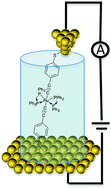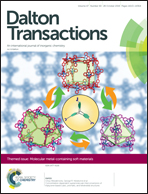Metal bis(acetylide) complex molecular wires: concepts and design strategies
Abstract
The past decade has seen a remarkable surge in studies of thin-film and single-molecule electronics, due in no small part to the development and advancement of experimental methods for the construction and measurement of metal|molecule|metal junctions. Within the plethora of molecular structures that have been investigated, metal complexes of general form trans-M(C![[triple bond, length as m-dash]](https://www.rsc.org/images/entities/char_e002.gif) CR)2(Ln) have attracted attention from the inorganic and organometallic chemistry community in the search for efficient molecular wires due to the potential π–d–π orbital mixing along the molecular backbone. In this article progress towards this goal will be summarised, and design strategies for future molecular components discussed.
CR)2(Ln) have attracted attention from the inorganic and organometallic chemistry community in the search for efficient molecular wires due to the potential π–d–π orbital mixing along the molecular backbone. In this article progress towards this goal will be summarised, and design strategies for future molecular components discussed.

- This article is part of the themed collections: Spotlight Collection: Inorganic Molecular Electronics, 2018 Frontier and Perspective articles and Molecular metal-containing soft materials


 Please wait while we load your content...
Please wait while we load your content...